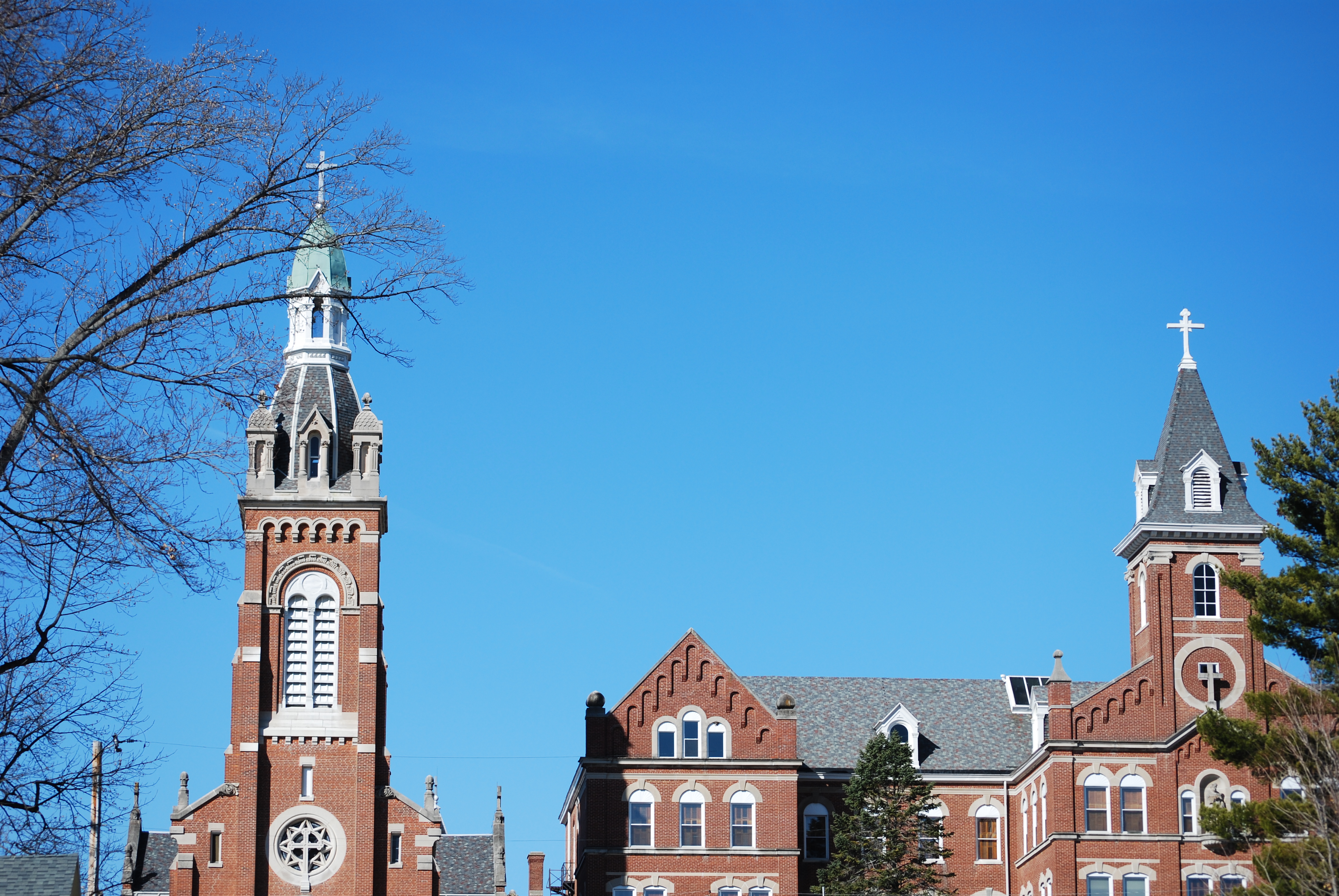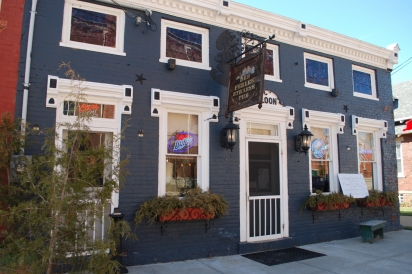Oldenburg
With its soaring church steeples dominating the sky in the gently rolling hills of Southeastern Indiana, Oldenburg, known as the Village of Spires, is the perfect place for a taste of early-19th-century Bavarian hospitality, charm and cuisine.
“The majority of people who live here are German,” says Paul Selkirk, who—though he isn’t—has for the last 35 years been festival chair of Freudenfest: German for “festival of fun.” This celebration of all things German is held the third weekend of July and attracts about 12,000 people to this village of 600.
“All the food we sell at the festival is homemade. Townspeople just get together and start cooking.”
That cooking includes homemade pies, which are auctioned off at Freudenfest, ranging from $15 to $1,000. The proceeds from the auction, as well as all other sales, including the numerous German draught offerings in the biergarten, are used for the beautification, preservation and restoration of Oldenburg.
“We have people who have been entering pies since I began running the auction 20 years ago,” says Marla Nobbe. “And who knows how long they were donating pies for the auction before that. Because the festival is in the summer, we mostly have fruit pies, but there are cream pies too.”
In an interesting culinary twist that seems so Southern Indiana, the specialty of several long time restaurants isn’t just the German dishes found at the Freudenfest or featured on their menus.
“If you want Bavarian food, we have brats and metts, which are smoked sausages,” says Betsy McCray, the daytime bartender at Wagner’s Village Inn, which opened in 1959. “We serve it with homemade sauerkraut that a man in Oldenburg makes and that we keep in a big ceramic crock that came from Germany. But we’re also known for having the best fried chicken in Southern Indiana.”
Their chicken is dusted with coarse ground pepper, salt and flour and then pan-fried in lard. But McCray says it’s not the recipe that makes it a winning dish, but the cooking method.
“We fry our chicken in the same cast-iron pan we’ve used for years,” she says. “It hasn’t been cleaned since 1988, just scraped and seasoned, the way a good iron skillet should be maintained. We also make pan gravy for our mashed potatoes in that skillet.”
Just a block away, The Brau Haus, which opened 94 years ago, features such lieblingsgeruchte (favorites) as fresh bratwurst with sauerkraut on rye with a side of German potato salad and vorspeisen (appetizers) like sauerkraut balls served with Dusseldorf mustard. Hand cut, tenderized and hand breaded schnitzel is also on the menu. But they too are also known for, you guessed it, fried chicken.
“I know it’s kind of strange since we’re a German-American restaurant,” says manager Jeff Batta, “but people love our chicken. We dip it in flour and seasonings and deep fry it.”
Bavarian cuisine was part of Batta’s culinary heritage growing up on the family farm 15 miles outside of the village. His mom, who is from Oldenburg, cooked German dishes and he remembers watching his grandmother make sauerkraut.
“I’ve been to Bavaria four times,” Batta says, “and Oldenburg really resembles both Germany and Austria.”
That most likely was the idea back in 1837 when the village was founded by two German speculators who hailed from the province of Oldenburg in Northern Germany. In ways, little has changed. Homes and businesses are meticulously maintained, the gardens and window boxes filled with an abundance of flowers and the streets, well … they’re spotless.
Eighty of Oldenburg’s 115 homes were built before the 20th century began and the entire village is on the National Register of Historic Places. Street names end with strasse (road) and the village’s businesses include Schwestern (sisters) Gallery, which features works by local artists; Carriage House Antiques, or Kutschenhaus, located in a former carriage house built in the late 1800s; and the Kessing Haus Café, known for its freshly made breads baked in a wood-burning oven.
Several walking tours provide more glimpses into Oldenburg’s history. “A Franciscan Adventure” winds its way among the complex of buildings belonging to the Sister of St. Francis of Oldenburg, who first arrived there in 1851.
The grounds include a 300-acre farm (monasteries used to be self-sustaining with dairy cows, carpentry shops and crops); the Immaculate Conception Chapel, built in 1889 with a 161-foot tall tower and belfry and a stone grotto with hedges in front spelling the Latin word for peace; Our Lady of Fatima Shrine; and the Oldenburg Academy, which opened in 1852 as a boarding school for girls.
A tour of the village highlights such details as the stained glass windows at the Convent Chapel and the tin façade of the 1861 Hackman-Munchel Store—the largest secular building in town. Other architectural touches to look for include the engraved sun and moon and initials I.H.E.H. on the Huegel House’s stone lintel. Those are the initials of the original owners who built the house in 1845. The moon and sun indicate the tavern and inn, open day and night.
As for the spires, there are the Victorian Romanesque and Baroque-style Franciscan chapels and churches topped with a variety of peaks, a rare Zwiebelturum, or onion dome, and a Gothic peak among others.
Less historical, but so much fun, brightly painted fire hydrants show the faces of the original owners whose homes they front. And, no matter how full you are, one other must stop is the Pearl Street Tavern, which has been a popular place for drinks and food in Oldenburg since the 1850s.
For more information, please visit Freudenfest.com or FranklinCountyIN.com.






